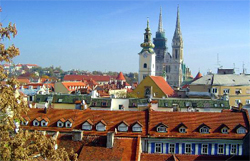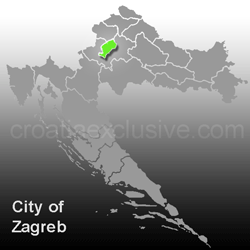 Zagreb is Croatia's capital and largest city. The city boasts many museums, art galleries, and hosts various events throughout the year. Outdoor cafes are full, dance clubs pump music into the night air and art festivals are popular. Zagreb has several reminders of the Austro-Hungarian period, particularly the decorated facades and the deep yellow colour of old government buildings.
Zagreb is Croatia's capital and largest city. The city boasts many museums, art galleries, and hosts various events throughout the year. Outdoor cafes are full, dance clubs pump music into the night air and art festivals are popular. Zagreb has several reminders of the Austro-Hungarian period, particularly the decorated facades and the deep yellow colour of old government buildings.
The city can be divided into three areas: the upper town, or old town (the winding part up in the mountains), the lower town (the flat, grid-like section) and the new part (the surrounding plain covered with concrete-block apartment buildings).
Begin at the Cathedral of the Assumption of the Blessed Virgin Mary and stroll past the nearby central market and into spacious Jelacic Square (Trg bana Jelacica), which is the heart of the city. Catch the funicular to the upper town and pass the Stone Gate, which has a shrine to the Virgin Mary. (The icon surrounded by candles was miraculously untouched after a devastating fire in 1731.)
Walk around to St. Mark's Church, which has a colourfully tiled roof (reminiscent of the Hapsburgs) and a stark interior designed by sculptor Ivan Mestrovic. Stop by the Mestrovic Studio, located at Mletacka 8, which houses an extensive collection of his work. If you'd like to see another church, visit St. Catherine's, which has a frothy baroque interior that looks as if it could be made of whipped cream.
There are a number of museums in the city: The best are the Strossmayer Gallery of Old Masters and the Museum Mimara (wonderful selection of art glass and European paintings). If you can't afford to stay at the Regent Esplanade hotel, located at Mihanoviceva 1, at least have a coffee there. The art-deco wonder was built to house passengers travelling through the area on the Orient Express.
|
Basic facts:

Area:
641 km²
Population:
779.145 (2001)
|

|